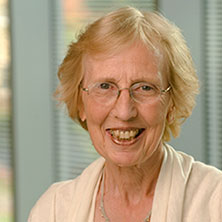Digital Humanities: Faculty Projects
On October 28, the Teaching, Learning & Technology Roundtable (TLTR) Faculty Development & Best Practices Committee and The Digital Humanities Committee presented Digital Humanities at Seton Hall University. At this Provost sponsored event, faculty spoke on how they use digital humanities in their own scholarship, classroom, and other activities.
The speakers included William J. Connell, Mary M. Balkun, Petra T. Chu, Karen B. Gevirtz, Amanda E. Mita and Veronica L. Armour.
William Connell, Ph.D. is a part of a project to digitize the recording of meeting minutes from the Florentine Councils, 1350-1530. The process includes taking microfilm and digitizing it into tiff files to be viewed on the internet. This is a huge contribution to the Valente Italian Library at Seton Hall, the largest library in the United States dedicated solely to the Italian language and history. By digitizing these documents, it creates a collaboration not only with the Seton Hall faculty working on this project, but with the Archivio di Stato of Florence, and the University of Chicago. By working in collaboration the digitize documents would be available for scholars who cannot travel to Florence to study these documents. This process makes a decent portion of Florence’s history available by the click of a mouse.
Mary M. Balkun, Ph.D and Martha C. Carpentier, Ph.D. are on a mission to bring creativity and technology together into their classroom. On a joint project that brought them and their students to Ireland for an English/Core III course, they had their students document their trip via a collaborative blog. Dr. Balkun believes that a major component of digital humanities is that something has to be made or produced. The blog required students to document their trip in a journal format using both images and written text. The students needed to demonstrate their awareness of the Irish culture, the people, the place, and the literature. The blogs are easy to use and share. Blogging gives students a different creative perspective as well as develop a new skill set. The blog posts were graded via a rubric that was handed out to the students. The grade was determined by how much the student included elements of the rubric into their blog post.

Petra Chu, Professor of Art History; Director M.A. Program in Museum Professions, Graduate Studies in Museum Professions
Petra Chu, Ph.D. presented on her experience with digital humanities and publishing. As the founding and managing editor of the Nineteenth-Century Art Worldwide journal, she demonstrated how this online journal presents numerous possibilities for publishing. By using funding from the Mellon Foundation the journal was able to produce six digital humanities articles. An example of the possibility of using digital humanities in publish is an article by Elizabeth Buhe who created an online 3D reconstruction of the Egyptian Glyph exhibit in the Louvre during the mid-1820’s. By creating a 3D reconstruction the Buhe found disparities between this exhibit and the typical exhibits presented at the same time. It was through her use of the digital humanities provided that she discovered this.
Karen Gevirtz, Ph.D needed to find a way to incorporate a research element for the class ENGL3382/ WMST3382/ CORE3382: 17th and 18th Century Catholic British Women Writers. The problem was 10 out of the 15 or so students were non-English majors. These students were not accustomed to writing a 7-10 research English paper, but the students that were English majors needed a research paper to qualify for graduation. To solve this problem she created an alternative research project. The project was to create a “virtual museum” blog. The students had to create a virtual exhibit in a museum for a topic in the time period they were studying. This allowed the students to be creative and to still gain research skills. In collaboration with the Teaching, Learning & Technology Center, they created a rubric that the students would have to follow and then be graded on. Dr. Gevirtz said the most exciting aspect of this project was that it challenged her students. A student said she chose the blog option because she thought it would be easier than writing a paper, but she was wrong. The virtual museum is not any easier than writing a paper, it challenges the students to not only do research but also to be creative. In that sense the blog offers an opportunity to hone many different skills. Another aspect of Dr. Gevirtz and Dr. Balkun and Dr. Carpentier’s blogs are that they are ongoing, future students can add to them. This creates a collaboration between students of the past and present, and future. View the blog here!
Veronica Armour, M.A.T, Instructional Designer and Amanda Mita, Archives Specialist are collaborating on the Trina Padilla De Sanz Digital Humanities Project. The project includes digitizing the collection of archives, transcribing, translating, and a working website for the final product. This project is a huge undertaking and the team decided that crowd sourcing for the transcribing and translating portion of the project was the best decision. Ms. Mita went into depth about the process of crowd sourcing, the benefits, and the disadvantages. Crowd sourcing is a virtual volunteer core group. Crowd sourcing encourages the public to engage with the documents. This project promotes communal collaboration. They hope to present this for lessons in the K-12 community. This could be used for reading and typing activities as well as working with primary documents. The entire project, not just the result of the project, having a database of archives on Trina Padilla De Sanz, is a learning opportunity for students, the community, and educators.
To learn more about any of the above projects a video of the presentation will be available via the Teaching, Learning, and Technology Center.
Come to the Digital Humanities Faculty Showcase on Tuesday, November 17 from 10 a.m.- 1 p.m. in the Beck Rooms, First Floor, Walsh Library!
